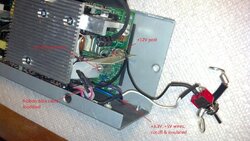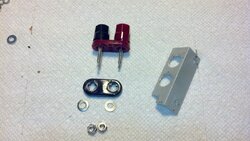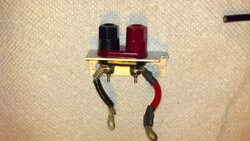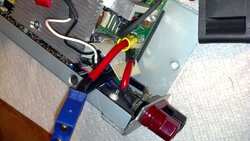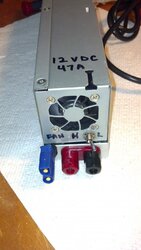[ EDIT: I added some photo from my own thread, the lighting in my shop inst great for the camera however]
Thought I would post some photos of a quick build I did in case anybody finds this useful. If you have anything that runs on 12 volts DC and needs a lot of power you have probably noticed that commercial bench top power supplies can be very expensive.
There is a cheap and easy solution. Used high power computer server power supplies are dirt cheap on the surplus market, and can be modified for duty as a bench top supply with minimal work. What you want here are server supplies, not desktop supplies - the server units are built to provide big amps on 12VDC and not much else and they have exceptional voltage regulation.
I got the idea and modification information from radio control forums. Some intrepid folks figured out the pin outs for the hot swap connectors on a number of different units so once you know whats what its a simple matter to wire the unit to turn on and replace the hot swap connector with your favorite power connector.
the unit below is an HP 1U server PSU that is rated to deliver 47amps on the 12VDC rail (so actually nearly 560 watts). It was probably hundreds of dollars new, I got a salvage unit on amazon for 10 bucks. An evenings work some parts from the local electronics dealer and presto - I have a nice bench top supply!
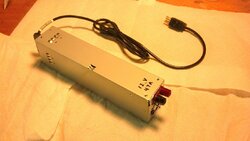
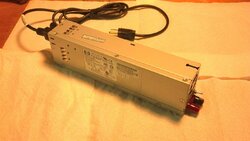
The small rocker switch is a Hi/Lo fan control, there is a fan sense lead and if you ground it it changes the fan from 100% duty to temperature control mode. The power supply on lead I just hardwired to ground so the unit is on whenever its plugged in. If you wanted to it could be wired to a switch. For the outputs, I removed the existing hot swap daughterboard that had blade connections and replaced it with a pair of bannana jack binding posts on a peice of angle iron wired directly to the +12v and GND terminals of the main board with 10awg wire and crimped ring terminals.
The bannana jacks are probably the weak link in terms of power delivery now (likely only good ofr 30A or less) so I will look at putting something heavier duty there before I try loading it to max amperage.
If your interested in exactly how its done let me know and I'll point you to instructions. RC users have modded a few different PSUs like this and some folks are even running pairs in parallel for nearly 100amps, or in series for 40+A @ 24v (running in series requires floating the DC ground on one unit, a little more involved work).
I will caution you thought that a lot of the folks on those RC boards really dont have a clue about electronics and its scary what some of them where trying to do - I had to really dig to find the right info to do this properly and safely. As with any project like this its not manufacturer approved and totally at your own risk of course.
Thought I would post some photos of a quick build I did in case anybody finds this useful. If you have anything that runs on 12 volts DC and needs a lot of power you have probably noticed that commercial bench top power supplies can be very expensive.
There is a cheap and easy solution. Used high power computer server power supplies are dirt cheap on the surplus market, and can be modified for duty as a bench top supply with minimal work. What you want here are server supplies, not desktop supplies - the server units are built to provide big amps on 12VDC and not much else and they have exceptional voltage regulation.
I got the idea and modification information from radio control forums. Some intrepid folks figured out the pin outs for the hot swap connectors on a number of different units so once you know whats what its a simple matter to wire the unit to turn on and replace the hot swap connector with your favorite power connector.
the unit below is an HP 1U server PSU that is rated to deliver 47amps on the 12VDC rail (so actually nearly 560 watts). It was probably hundreds of dollars new, I got a salvage unit on amazon for 10 bucks. An evenings work some parts from the local electronics dealer and presto - I have a nice bench top supply!


The small rocker switch is a Hi/Lo fan control, there is a fan sense lead and if you ground it it changes the fan from 100% duty to temperature control mode. The power supply on lead I just hardwired to ground so the unit is on whenever its plugged in. If you wanted to it could be wired to a switch. For the outputs, I removed the existing hot swap daughterboard that had blade connections and replaced it with a pair of bannana jack binding posts on a peice of angle iron wired directly to the +12v and GND terminals of the main board with 10awg wire and crimped ring terminals.
The bannana jacks are probably the weak link in terms of power delivery now (likely only good ofr 30A or less) so I will look at putting something heavier duty there before I try loading it to max amperage.
If your interested in exactly how its done let me know and I'll point you to instructions. RC users have modded a few different PSUs like this and some folks are even running pairs in parallel for nearly 100amps, or in series for 40+A @ 24v (running in series requires floating the DC ground on one unit, a little more involved work).
I will caution you thought that a lot of the folks on those RC boards really dont have a clue about electronics and its scary what some of them where trying to do - I had to really dig to find the right info to do this properly and safely. As with any project like this its not manufacturer approved and totally at your own risk of course.


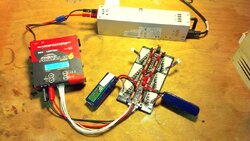
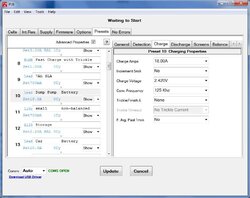
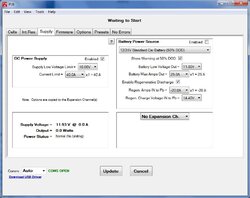

 But the thread does have good information toward the end and good links to individual server supply models with detailed info.
But the thread does have good information toward the end and good links to individual server supply models with detailed info.